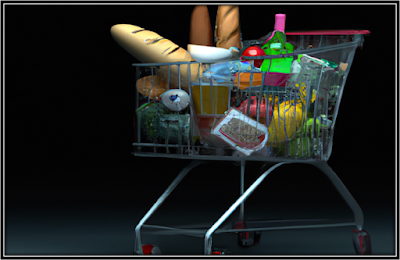The retail trade sector refers to the segment of the economy that is involved in the selling of merchandise or services directly to consumers. In other words, businesses in this sector purchase products from manufacturers or wholesalers and then sell them directly to the end user, which is typically the general public.
$179.00 USD
(Bundle Downloadable After Purchase)
Templates Included:
- Fitness Studio Scaling
- Educational Courses
- Bike Shop
- Jewelry / General Retail Store
- Retail Building Construction and Rent
- Vending Machines
- eCommerce
- Pawn Shop
- Retail Store Scaling
- Franchise Scaling
- Kiosk - Automated
- Coffee Shop / Café
Common Financial Modeling Techniques Used in the Templates Here:
- Inventory logic (for how far out in time inventory is purchased and COGS) - This helps get a more accurate working capital requirement if you are planning out a startup.
- Margin configuration per product type (mainly COGS %)
- Sensitivities for various scenarios. Usually a low, mid, high set of logic is applied to volume and pricing.
- Staffing.
- Revenue forecasting per product categories.
Here are some key characteristics and components of the retail-trade sector:
Types of Retailers: This sector includes various types of retailers like:
- Department stores
- Supermarkets and grocery stores
- Specialty stores (e.g., bookstores, clothing stores)
- Convenience stores
- Online retailers (e-commerce businesses)
- Discount stores
- Warehouses and clubs
- Sales Channels: The retail-trade sector has both brick-and-mortar physical stores and digital stores or e-commerce platforms.
Variety and Assortment: Retailers can either offer a wide range of products (general merchandise stores) or can specialize in selling a particular type of product (specialty stores).
Service Level: Depending on the business model and target market, different retailers offer varying levels of service. For instance, a luxury boutique might offer high-touch personalized service, while a discount store may be more self-service oriented.
Pricing: Retail pricing strategies can vary from everyday low prices to high-end premium prices, depending on the target market and positioning of the retailer.
Distribution: Retailers often rely on an intricate supply chain to ensure that goods are procured, stored, and then distributed to their retail outlets. This involves logistics, warehousing, inventory management, and distribution strategies.
Marketing and Promotion: Retailers frequently engage in promotional activities to attract customers, including sales, loyalty programs, advertising campaigns, and window displays.
The retail-trade sector is vital to the economy, as it represents a significant portion of consumer spending and employment. It's also an industry that has seen rapid change in recent decades, particularly with the rise of e-commerce, the evolving expectations of consumers, and technological advancements that have transformed shopping experiences.
Advantages of the Retail Sector
Economic Growth: As the economy grows, consumer confidence and purchasing power typically increase, leading to higher retail sales.
E-commerce Boom: The continued growth of online shopping opens up vast markets for retailers. With a global audience at their fingertips, even small retailers can reach a worldwide customer base.
Emerging Markets: As emerging economies develop, a growing middle class with increasing disposable incomes can lead to higher demand for retail goods.
Technology Integration: The use of technology, including AI, VR, and AR, can enhance the shopping experience, drive sales, and optimize operations. Technologies like machine learning can also help retailers forecast demand more accurately.
Omnichannel Retail: Retailers blending their online and offline channels can offer a seamless shopping experience for consumers, leading to increased sales and customer loyalty.
Sustainability and Ethical Retailing: There's a growing demand among consumers for sustainable, eco-friendly, and ethically produced products. Retailers adapting to these demands might see a competitive advantage.
Private Label Growth: Retailers developing their own brands (private label products) can enjoy higher margins and build customer loyalty.
Experiential Retail: Creating in-store experiences can draw customers into brick-and-mortar locations. This includes things like workshops, cafes, or entertainment options within stores.
Personalization: Using data analytics to tailor the shopping experience, whether in marketing efforts, product recommendations, or in-store experiences, can lead to increased customer loyalty and sales.
Supply Chain Optimization: Advances in supply chain management, including just-in-time inventory and dropshipping, can lead to reduced costs and increased efficiency.
Diversification of Revenue Streams: Retailers diversifying into new areas, like offering subscription services, affiliated financial products, or extended warranties, can see growth in revenue.
M&A Activity: Mergers and acquisitions can lead to greater market share, optimized operations, and increased efficiencies, providing growth potential for the involved entities.
Emerging Retail Models: New models like direct-to-consumer (D2C) or pop-up shops can offer unique opportunities for growth and differentiation in the market.
While these bull cases provide a positive outlook, it's essential to remember that the retail sector also faces challenges, and not all retailers will benefit equally from these trends. Investors and stakeholders should always consider both the bull and bear cases before making decisions.
Want more templates? You can buy everything on the site in one large template bundle here.
